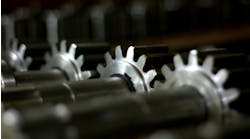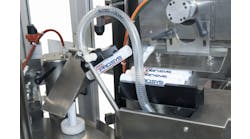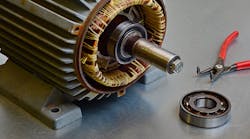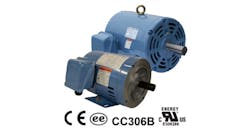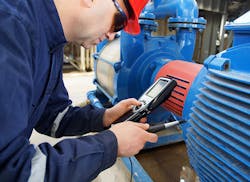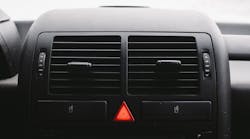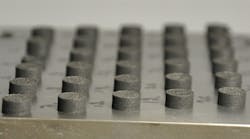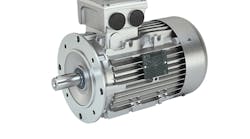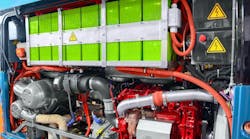To increase the productivity of your electric motors, prevent costly repairs to expensive equipment, and reduce potential operational downtime, one of the easiest solutions is to begin a program of regularly scheduled preventative maintenance. There are of course associated costs, but these are considerably less than any that could be incurred from unscheduled downtime and silent equipment.
We’ve collected 5 practical (and simple!) steps for preventative maintenance for your electric motors that will help you to keep your equipment in great condition and maintain operational excellence—minimizing downtime and keeping your profits up.
Please remember that full preventative maintenance is a vital part of your daily or monthly routine, and we cannot provide a full PM plan here. Instead, our goal is to help you with a good starting point in your PM process. If, at any point during regular monthly checks, you notice something out of the ordinary or potentially dangerous, contact your distributor or manufacturer for more information.
1. Keep Your Electric Motors Clean
There are many threats to the health of your electric motors, but few are as potentially hazardous as a dirty environment. While TEFC motors are fully sealed to keep contaminants out of precision inner components, it’s still important to keep them free of dust, dirt, oil, and debris. TEFC motors vent heat through their external fins and the fan, so if they aren’t kept clean, their ability to dissipate heat is hindered, which could lead to internal damage or failure.
For every 10° of increased motor operational temperature above insulation class limits, the life of the internal winding insulation is cut in half. Debris near seals can also eventually work its way inward and cause damage as well.
Remember: never clean a motor while it's in operation! Cleaning a motor when it’s operating can damage it or cause personal injury. Follow proper lockout procedures before starting any cleaning operation.Open Drip Proof motors are even more susceptible to damage in a dusty or dirty environment as they use an open-case design to vent heat, and care should be taken to keep them free from contaminants. It’s also important to carefully consider your environment when designing your application to ensure you have the right motor for the job.
High-voltage equipment should always be kept free of dust and dirt. Dust can be composed of minuscule materials that are able to conduct electricity, potentially creating damaging conductive paths where you don’t want them, resulting in current leakage, unexpected grounding, or short circuits.
For rugged environments, we recommend cleaning your electric motors and controls once a week. Average conditions may require fewer cleanings—perhaps only once every quarter or even just twice a year. To keep your TEFC motor clean, efficient, and cool even in harsh environments, blow out dirt with no more than 50 pounds of dry, compressed air.
For ODP motors, refer to your instruction manual for proper cleaning.
2. Schedule Regular Examinations for Electrical Components
In an industrial environment, all electrical components should be regularly inspected and, when necessary, maintained. Most electrical failures are a result of moisture or loose or dirty connections. A preventative maintenance schedule can help to identify these issues before they become critical, preventing such outages and maintaining your motor performance.One way to identify potential electrical problems is through a thermographic inspection, usually performed at peak-load conditions. This process helps to identify high-temperature excursions, which are often a result of loose or dirty connections, load imbalances, or incorrectly installed equipment.
To thoroughly check the electrical equipment, schedule an outage so that all circuit breakers and disconnect switches can be repeatedly opened and closed to make sure they operate safely and correctly. Make sure to also regularly test and calibrate protective relays and circuit breaker trip devices during the same inspection.
Motors often require different electrical component maintenance schedules based on their installed environmental conditions, the motor’s primary function, and the average load of the equipment. It's generally recommended to schedule a check at least once every three years, with a higher frequency for critical components. Specific test sets vary based on the age of the equipment and the manufacturer.
3. Check for Loose Components
Some components can become loose over time, and these loose components can lead to unexpected or excessive wear. Motor mounts can even become warped, cracked, or in the process of complete failure. Check your motor frequently to see if the fittings, mounts, mounting bolts, steel base plates, and other components are properly and securely fitted.Moving parts should also be inspected for loose pins, bolts or bearings. A simple touch with your hand will tell you how well the contacts and relays operate, or if they stick or bind. Be cautious when feeling around hot or energized equipment!4. Check the Belts on Your Electric Motor
On belt-driven applications, it’s very easy to take your belts for granted, forgetting about inspections until it's too late. A worn belt that fails could lead to equipment damage, injury to personnel, or even death. Be sure that you regularly inspect your belts for wear and tension. Most belts should have about one inch of give and the sheaves should be firmly seated with no play. Also, be sure to verify that the pulley or sheaves are not worn and are within tolerance.5. Schedule Annual Vibration Analysis Tests
Excessive vibration can significantly shorten the lifespan of your electric motor as it creates wear on metal parts and can cause bearings and windings to fail.Excessive vibration can either be a mechanical or electrical issue; mechanical causes are more common. To check for mechanical vibration issues, examine belts for proper tension, faulty bearings, or misaligned or imbalanced components. Pay special attention to parts that rotate, such as the rotor, rotating load or drive train, since they tend to become unbalanced more frequently.
Since excessive vibration may not always be detectable by hand, certain instruments have been developed to analyze motor vibration. These tools will display the motor’s amplitude and frequency, alerting the user to potential issues. For more accurate testing, or identifying the source of vibrations, consider removing the load and running the motor while checking for vibration.
Start Today!
Don’t wait until your electric motor fails before taking preventative maintenance seriously. Start working on a regularly scheduled maintenance plan today to ensure that your electric motors continue to operate efficiently, safely, and reliably.
